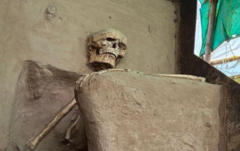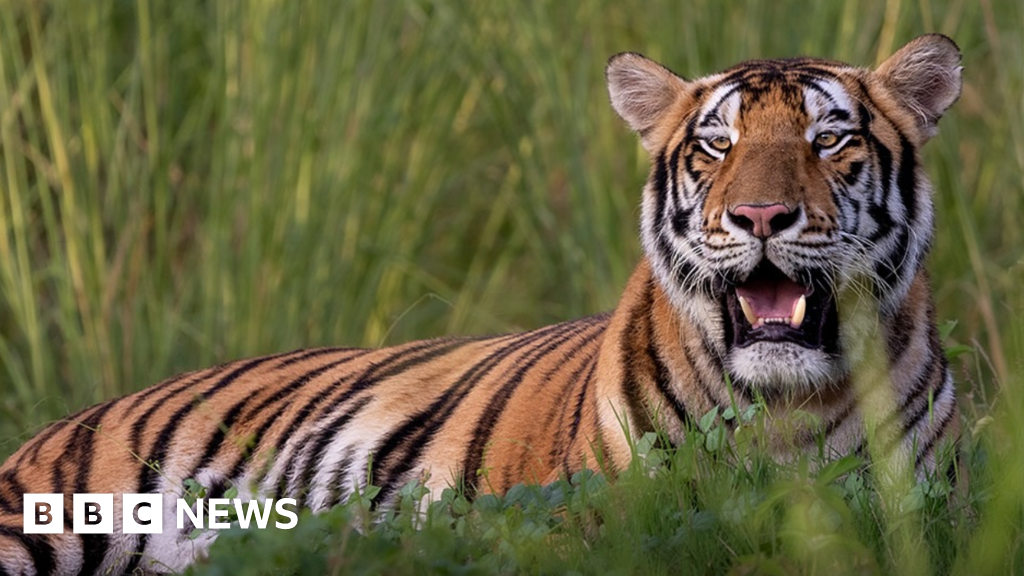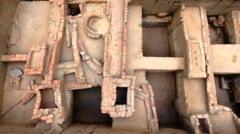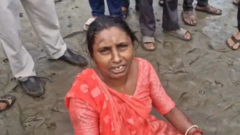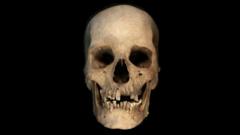The intricate story of a 1,000-year-old skeleton, discovered in a meditative position in Vadnagar, Gujarat, remains unresolved as it awaits a permanent home in a museum six years after its excavation. Archaeologist Abhijit Ambekar made this extraordinary find in 2019, uncovering well-preserved human remains believably dating back to the Solanki dynasty, which thrived from 940 to 1300 CE. Now housed in a temporary shelter, the skeleton exemplifies historical significance, yet it remains subject to bureaucratic disputes over custody and preservation responsibilities.
According to Ambekar, initial excavations revealed the skeleton seated with its arms arranged as if in meditation, reflecting a burial custom called "samadhi" where revered individuals were interred rather than cremated. Despite being one of only a few similar findings in India, the skeleton has yet to find a safe home due to ongoing disagreements between various government bodies. While many other artefacts from Vadnagar have been transferred to museums, officials cite procedural issues as the reason for this unique skeleton’s exclusion.
Currently positioned beneath a tarpaulin without guards, exposure to the elements has raised worries among Vadnagar locals. Many feel the delay in securing a proper museum display undermines the town's rich heritage and the efforts put forth to uncover its past. As the home of Prime Minister Narendra Modi, Vadnagar's historical significance is amplified, yet the absence of the skeleton within the newly established Archaeological Experiential Museum acts as a stark reminder of the complexities of preserving history amidst governmental red tape.
The artifacts unearthed in Vadnagar trace back over 2,000 years, depicting the region's extensive human activity and culture. Ambekar's team utilized specialized techniques to carefully remove the skeleton from its resting place, taking months to complete the excavation. He emphasizes the necessity for a climate-controlled environment in any future museum to safeguard the skeleton against decay.
Local sentiments echo the need for resolution; residents express frustration towards governmental delays. Many believe that properly displaying the skeleton could significantly elevate Vadnagar's appeal as a tourist destination. As the debate continues, the skeleton’s story of survival and cultural significance intertwines with the broader narrative of India's historical legacy.
According to Ambekar, initial excavations revealed the skeleton seated with its arms arranged as if in meditation, reflecting a burial custom called "samadhi" where revered individuals were interred rather than cremated. Despite being one of only a few similar findings in India, the skeleton has yet to find a safe home due to ongoing disagreements between various government bodies. While many other artefacts from Vadnagar have been transferred to museums, officials cite procedural issues as the reason for this unique skeleton’s exclusion.
Currently positioned beneath a tarpaulin without guards, exposure to the elements has raised worries among Vadnagar locals. Many feel the delay in securing a proper museum display undermines the town's rich heritage and the efforts put forth to uncover its past. As the home of Prime Minister Narendra Modi, Vadnagar's historical significance is amplified, yet the absence of the skeleton within the newly established Archaeological Experiential Museum acts as a stark reminder of the complexities of preserving history amidst governmental red tape.
The artifacts unearthed in Vadnagar trace back over 2,000 years, depicting the region's extensive human activity and culture. Ambekar's team utilized specialized techniques to carefully remove the skeleton from its resting place, taking months to complete the excavation. He emphasizes the necessity for a climate-controlled environment in any future museum to safeguard the skeleton against decay.
Local sentiments echo the need for resolution; residents express frustration towards governmental delays. Many believe that properly displaying the skeleton could significantly elevate Vadnagar's appeal as a tourist destination. As the debate continues, the skeleton’s story of survival and cultural significance intertwines with the broader narrative of India's historical legacy.

